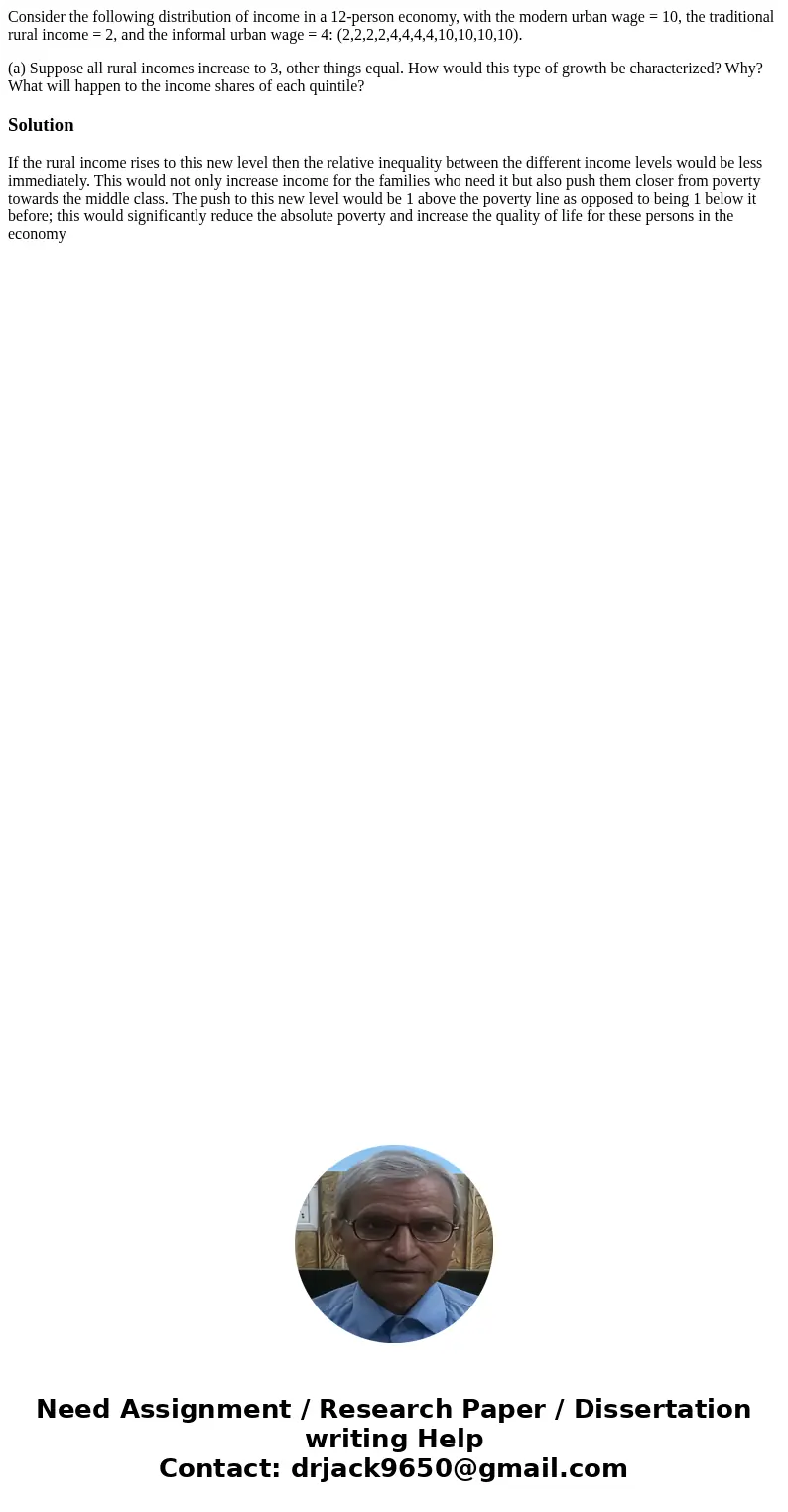Consider the following distribution of income in a 12person
Consider the following distribution of income in a 12-person economy, with the modern urban wage = 10, the traditional rural income = 2, and the informal urban wage = 4: (2,2,2,2,4,4,4,4,10,10,10,10).
(a) Suppose all rural incomes increase to 3, other things equal. How would this type of growth be characterized? Why? What will happen to the income shares of each quintile?
Solution
If the rural income rises to this new level then the relative inequality between the different income levels would be less immediately. This would not only increase income for the families who need it but also push them closer from poverty towards the middle class. The push to this new level would be 1 above the poverty line as opposed to being 1 below it before; this would significantly reduce the absolute poverty and increase the quality of life for these persons in the economy

 Homework Sourse
Homework Sourse